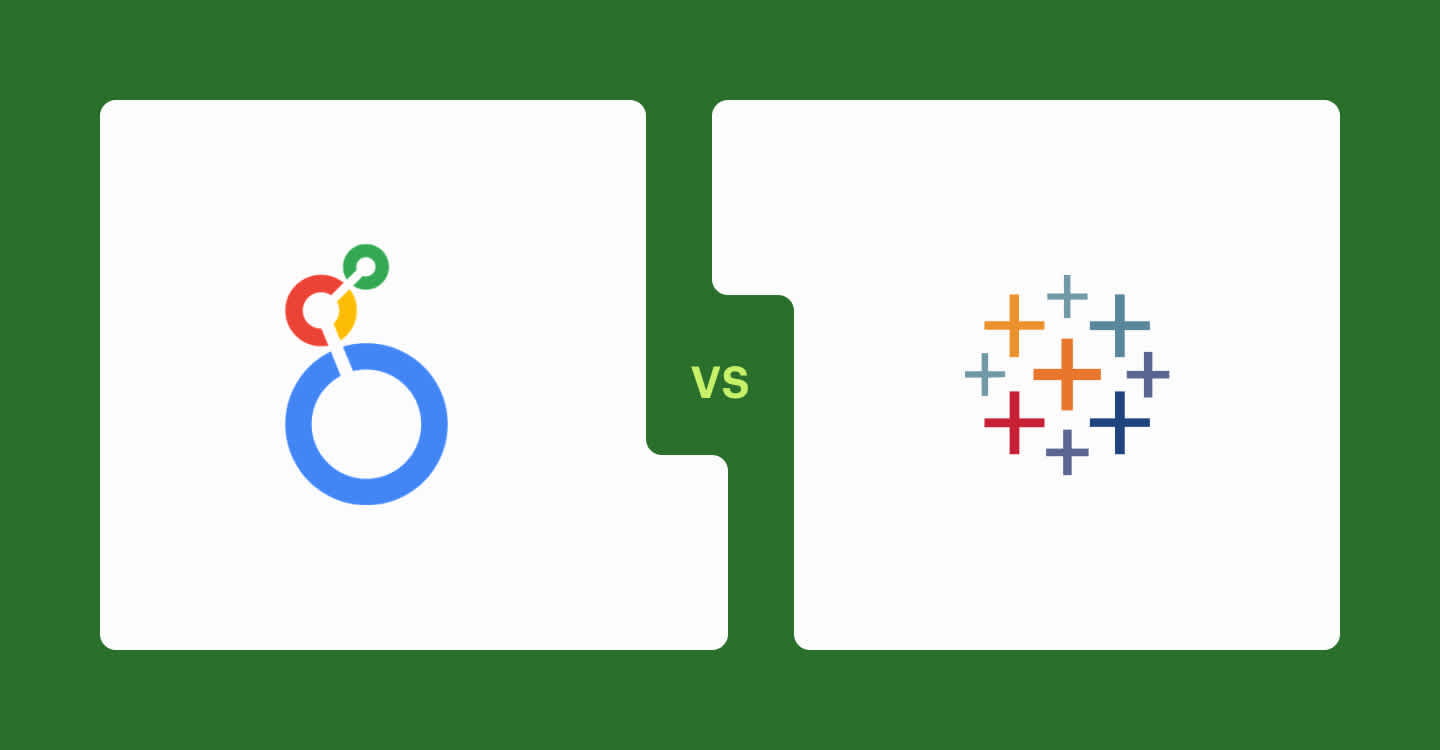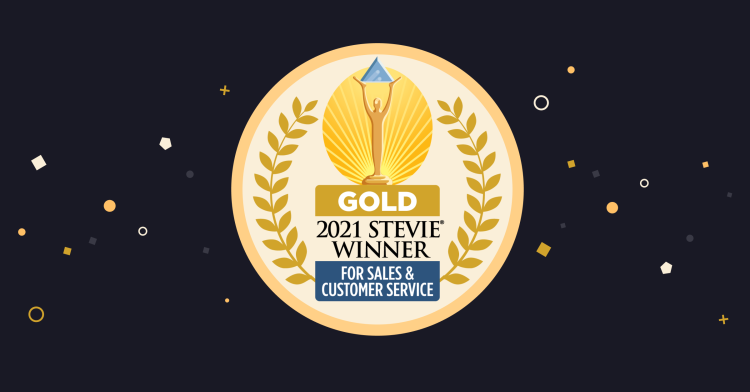Looker vs. Tableau: A Comparison
Laura Dambrosio, Mode team writer
December 22, 2022
NaN minute read

Companies need to turn raw analytics into actionable intelligence. To accomplish this, many organizations are now using business intelligence tools that have robust dashboard and reporting features, data visualization, and governance capabilities that streamline the process of collecting, analyzing, and presenting information.
If you’re looking for a BI tool, you’ve likely run into two long-known options on the market: Looker and Tableau.
We know that researching tools takes time, so in this piece, we’re going to summarize the strengths and differences of both by how we see them in the market.

Mode's Live Weekly Demo
Join our group demo to get a communal walk-through of Mode!
What is Looker?
Looker is a BI tool that’s owned by Google, which acquired the company in 2019 for $2.6 billion. It is now a part of the Google Cloud Platform.
The browser-based business intelligence solution enables teams to scan datasets, discover insights, and share them with others for self-service access.
Businesses primarily useLooker for business intelligence with strict governance, integrating insights, and building custom applications. Looker also supports multiple data sources and allows users to choose their own database and connect with over 50 supported SQL dialects.
What is Tableau?
Tableau is another business intelligence tool that’s known for visualizations to help organizations understand their data. The company launched in 2003 and is now owned by Salesforce following its2019 acquisition.
Just like Looker, Tableau aims to help businesses make confident decisions from data, mostly with its data visualization capabilities. The company offers a massive library of visualizations with out-of-box functionality, making it an ideal solution for many average business users.
Unlike Looker, Tableau has a large number of products within its product suite. Its main products include Tableau Desktop, Tableau Server, Tableau Cloud, Tableau Prep, and Tableau Analytics.
Tableau vs Looker: Feature comparison
While Looker and Tableau both fall under the category of business intelligence software, they have different strengths. For starters, Looker differentiates itself with strict, proprietary governance, while Tableau is differentiated in the market with data visualization. With this in mind, let’s take a closer look at how Looker compares to Tableau across different categories.
Key features
Looker features
Looker enables strict data governance, making it an all-in-one analytics platform.
Customers have access to Looker Developer Portal, which consolidates Looker’s developer resources for easy access.
It integrates with any SQL database or data warehouse like Azure SQL Data Warehouse and Amazon Athena, or Google BigQuery.
It runs on Windows, macOS and iOS, and Linux.
Tableau features
Tableau is known for data analysis with data visualization.
Tableau offers a large selection of connectors to data sources.
Tableau has quick dashboard integrations for applications in Salesforce and SharePoint.
You can deploy Tableau on-premise or as a SaaS model with Tableau Online.
The platform supports exchange, transform, load (ETL) functionality.
Data analysis
Looker lets teams do advanced analysis, while also ensuring strict data governance with their proprietary language LookML. One philosophy here is that by using strict governance, business users will trust their company’s metrics, arrive at quality insights, and make better decisions.
But if data analysts have to explore in pre-defined conditions, every time, how will they uncover insights that are outside of the set parameters?With such a strict and locked-in governance layer, it takes away from speed and agility, both of which are crucial for data analysis. Because of this, Looker isn’t ideal for companies that have dynamic environments and frequently changing business assumptions.
Tableau also falls short for speed and agility with data analysis because the platform leans into data visualization as a primary method for data analysis. This means that it can block out analysts who are used to SQL, R and Python to do more advanced analysis.
To that end, it is harder to do iterative analysis in Tableau. Visualizations on Tableau are built from static data models. If a Tableau user wants to update a visualization with new data, they would need to leave Tableau, prep and load the new data model in their external SQL editor, and possibly change the logic.
Governance and security
Looker has built-in data governance, with a proprietary language called LookML. This helps ensure consistency from the top down and makes data consistent for self-service. There are a few downsides with this approach though. First, data analysts need to adopt a new language—LookML—to build the necessary functions. Second, this built-in governance can at times be too rigid, preventing some insights to be found. Looker only lets you find answers to questions in modeled data; but as some Mode data teams have discovered, some incredibly important insights have only been found in raw data (does your data team have time to model data when a revenue product line is dropping?).
Additionally, if your business is using more than one business intelligence platform, it will also need additional data governance tools, which reduces Looker’s value.
As for security, Looker and Google have a shared responsibility model. When using Looker, you’re responsible for configuring secure access between Looker and your database and controlling access and permissions. Meanwhile, Google handles tasks like ensuring code quality and other security best practices.
Mode’s integrates with dbt’s Semantic Layer.
Tableau is more flexible with governance than Looker. To get data analysis-ready, you need to use relationships, joins, and custom SQL (as demonstrated here). There are requests for Tableau to be more tightly integrated with dbt because “dbt would have a lot of metadata that would be very useful for organizations to put in the hands of self-service users of Tableau.” The can also support third-party schemas and multi-factor models. Tableau also lets you configure network security, data security, and authentication for Tableau Server.
What is Data Governance? Framework and Examples
The complete guide to a data governance strategy that ensures flexibility and safety.
Pricing
Looker doesn’t disclose pricingon its website but has been reported to be quite pricey. Instead, the company offers custom pricing depending on several factors including types of users, the scale of deployment, and database connections.
Tableau has a reputation for being one of the priciest business intelligence tools on the market. The platform’s pricing is subscription-based, and customers can choose from models like Tableau Creator ($70 per user/month), Tableau Explorer ($42 per user/month), and Tableau Viewer ($15 per user/month).
See Mode’s plan options (we’re known to be more reasonable).
Data visualization
Looker has list of native visualization types you can choose from which include cartesian charts, pie and donut charts, progression charts, maps, and others. But while the platform offers a decent variety of visualization tools, Looker’s main issue is that the platform lacks the internal functionality to modernize them. As one user says, Looker has the potential to rival lead contenders like Tableau and Power BI—butfocusing on enhancing visualization does not appear to be a priority for Google.
Tableau is hands-down the better option for visualization, with easy-to-use and access visualizations that enable business users to quickly discover insights. Tableau users can take raw data and transform it into a variety of visualizations in a drag-and-drop format.
Learn about Mode’s visualizations.
Customer support
Looker’s customer service was a key contributing factor for customer satisfaction in its early days and helped the company win customers. But in March 2022, the company laid off its entire U.S.-based support team. And as a result, Looker customers no longer have access to specialists when setting up the platform, fixing bugs, and troubleshooting issues.
Tableau users also struggle with poor technical support. The company has a reputation for being unresponsive to customer needs, and customers often have to leverage community members to navigate issues.
Learn about Mode’s Award-Winning Customer Support.
Data integration and modeling
Looker contains an open set of APIs that enable the company to pull data from any SQL database or third-party platforms, including Shopify and Snowflake. You can connect Looker to a database that supports SQL queries, automatically produce a LookML model, collaborate with team members to build on the model and customize it. Looker also has pre-built analytical templates called Looker Blocks that enable you to quickly transfer analytics to dashboards.
Tableau also connects to a variety of third-party platforms, enabling you to extract data for visualization and create Tableau dashboards. For example, you can connect Tableau to platforms like Hootsuite and SproutSocial to create compelling social media visualizations.
Customer feedback
Since only certain users can create dashboards, the tool makes it difficult to create deep dives into specific issues. Looker also comes with a learning curve, making it challenging for beginners. However, the platform’s data modeling component is very powerful.
The general consensus about Tableau is that the platform is much more expensive than most of its competitors, which makes it a tough sell for startups and small businesses. Additionally, the platform can also beslow when working with big data sets. On top of that, it’s difficult to use and integrate Tableau with external services. Add it all up, and Tableau is simply not a platform for beginners.
Mode: A Looker and Tableau alternative
At the end of the day, Looker and Tableau are just two products within a massive market that’s growing bigger and more complex each year. Of course, an alternative option is Mode, a leading business intelligence platform that’s purpose-built for high-performing data teams.
What is Mode?
Mode is the modern business intelligence platform that unites data teams with business teams to build analytics that drive business outcomes.It’s built for fast-moving data teams and accessible enough for business users to access and utilize. With the help of Mode, business teams can find trusted answers whether they start with SQL Editor or they start with a Dataset.

Mode's Live Weekly Demo
Join our group demo to get a communal walk-through of Mode!
Mode streamlines the path from question to insight by putting real-time data where the action is—like customer-facing reports, internal tools, and applications. Today more than 50,000 analysts depend on Mode to answer questions faster every day.
Mode top features
Mode is simple to use and easy to scale.
Mode enables everyone to explore data and build reports, powered by governed datasets and metrics.
Mode lets companies open up results of predictive modeling, statistical analysis, and more to everyone.
Mode plugs into any modern data stack lineup.
It’s highly versatile thanks to the Mode API.
The platform provides flexible connectors to data warehouses.
Analysts can quickly toggle through R, Python, and SQL Editor notebooks from a central location, which saves time.
Mode’s visualization tool, Visual Explorer, lets users drill down into large datasets and create visualizations.
Mode vs. Looker
Unlike Looker, Mode specifically supports data analysts, by not restricting them through governance. Here’s a closer look at how Mode compares to Looker.
Data analysis
Mode’s strength is in its ability to let teams run fast with ad hoc and advanced analysis—you don’t need to get bogged down in the modeling layer. Teams don’t have to get blocked by needing to work with modeled data.
Both data teams and business users can jump into Mode. Analysts can use a SQL, R, and Python workflow, while business users can slice, dice, and create their own visualizations with drag-and-drop capabilities.
Time-to-value
With Mode, analysts can get set up much faster. And getting insights doesn’t have to be blocked by analysts knowing a proprietary language like LookML.
“Speed is really important at our stage and that’s why we chose Mode. Mode gives us an agile solution for business intelligence.”
Customer support
Mode takes a much different approach to customer service than Looker. Customers get access to a best-in-class support team with any paid pricing plan for end-to-end coverage and support. According to one user, Mode’s support team is a true differentiator, “Problems are solved with empathy, quickly.”
Data governance
Looker’s data governance is rigid. All analysis you do in Looker has to be on data that was modeled in LookML, a proprietary language that analysts have to learn. It has a stranglehold on the platform, which inhibits data exploration.
Mode allows for much more flexible governance options. You can use Datasets, definitions, or if you’re a customer of dbt—you can use our dbt Integration which ensures trustworthy metrics for end users every time. Mode believes that global governance layers should live outside of the BI tool you’re using to be able to work with future data innovations.
Mode vs. Tableau
Tableau’s legacy approach centers around visualization but falls short for analysts. For data teams, Tableau requires a lot more time for analysis. Mode goes a step beyond to let business users and data teams work together easily on data visualizations, data exploration, and provides a faster work flow for analysts. Here’s an overview of how Mode compares with Tableau.
Data analysis
No analyst workflow—Tableau doesn’t meet the current expectations of modern-day data analysts. The primary method of analysis on Tableau is visualizations; to really drill into the data, analysts should be able to use languages like SQL, Python, R, in the same platform. Mode offers this technical workflow and lets business teams run with visualizations and easy data exploration.
No iterative analysis—Tableau also makes it difficult to perform iterative analysis due to the fact that it uses static data models for visualizations. Tableau makes you leave the platform, do data preparation and loading in an external SQL editor, and adjust the logic. But with Mode, you can conduct iterative analysis without having to leave the platform. You can revisit your SQL query, visualizations, and notebook environments within Mode.
Visualizations
Tableau is known for it visualization, but Mode lets you drag-and-drop your way through analysis with basic and advanced visualization types. You can add custom text charts that help describe what’s happening, brand reports on theme, highlight key trends, and share reports out to tell the story about what is happening. And reports built on Datasets are automatically refreshed on the dataset schedule.
Customer support
Customer service is another area where Mode shines compared to Tableau. Instead of being unresponsive and forcing users to rely on community forums, Mode is immediately available for rapid-response troubleshooting, along with a service-level agreement (SLA) that ensures 99.9% availability every quarter.
Data querying
Querying is neither easy nor intuitive on Tableau and it forces users to leverage external tools. Mode makes querying data very simple and straightforward, which helps analysts find insights faster.
Time to value
Mode lets you get started fast (see how you can an entire modern data stack in 30 minutes in Mode) and and lets analysts get started with zero data prep if they wanted to.
In Tableau, there’s a major disconnect between end users and analysts. Despite Tableau’s intentions of enabling business users to conduct their own analysis and design their own visualizations, it still takes a long time to produce actionable decisions and glean insights. With Mode, analysts can start using the platform with minimal training.
SQL Editors
In Tableau, you can edit a custom SQL query. is difficult to use because the syntax isn’t standard and doesn’t align with target databases. As a result, users typically create tables in their own external editor and then move them into Tableau.
Mode’s SQL editor has a familiar syntax. Users also benefit from features like code highlight and formatting, keyboard shortcuts, and autocomplete. Plus, the SQL editor’s schema browser enables analysts to analyze their schema before running a query. Further, analysts also have the ability to augment SQL with loops, if/then statements, and variables using the Liquid template language.
The bottom line: Mode vs. Looker vs. Tableau
At the end of the day, your tool choice is about what works best for your team and environment. With so many factors to consider, we recommend assessing and consulting with your team to select a tool that aligns with your unique needs.
Additionally, Looker is dependent on Google priorities and Tableau is dependent on Salesforce priorities for new developments. As a smaller shop, Mode is not blocked by red tape from competing lines of business.
For more information about Mode, check out our resource library. To ask more questions about Mode, join our live weekly demo.

Watch a product tour of Mode
Curious about how Mode works? Sit back and watch the video—no reps ;)
Get our weekly data newsletter
Work-related distractions for data enthusiasts.




